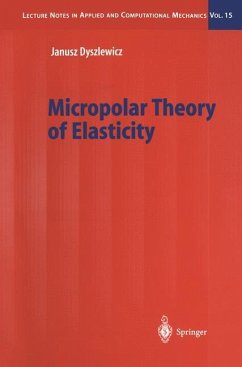The monograph "Micropolar Theory of Elasticity" is devoted to the asymmetric
theory of elasticity and thermoelasticity, aiming at researchers and
postgraduate students in solid mechanics and applied mathematics, as
well as mechanical engineers. It offers various new results including the basic field equations, general methods of integration of basic equations, formulations of problems, as well as solutions to particular problems. The presented general solutions cover those of
Galerkin, Green-Lamé and Papkovitch-Neuber type, whereas the
formulations include the displacement-rotation problems as well as pure
stress problems of asymmetric elastodynamics. Solutions to stationary 3D
and 2D problems for a half-space, and singular solutions to 3D and 2D
asymmetric elastodynamics and the thermoelasto-dynamics problems for an
infinite space are given.
theory of elasticity and thermoelasticity, aiming at researchers and
postgraduate students in solid mechanics and applied mathematics, as
well as mechanical engineers. It offers various new results including the basic field equations, general methods of integration of basic equations, formulations of problems, as well as solutions to particular problems. The presented general solutions cover those of
Galerkin, Green-Lamé and Papkovitch-Neuber type, whereas the
formulations include the displacement-rotation problems as well as pure
stress problems of asymmetric elastodynamics. Solutions to stationary 3D
and 2D problems for a half-space, and singular solutions to 3D and 2D
asymmetric elastodynamics and the thermoelasto-dynamics problems for an
infinite space are given.








